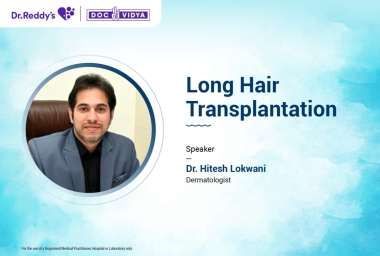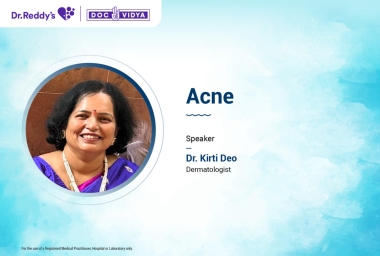button
test
test
test
test
test
test
test
test
test
test
Videos
15 Feb
Long Hair Transplantation by Dr. Hitesh Lokwani
Dr. Hitesh Lokwani shares insights on Long Hair Transplantation
Long Hair Transplantation by Dr. Hitesh Lokwani
Dr. Hitesh Lokwani shares insights on Long Hair Transplantation
button
15 Feb
Long Hair Transplantation by Dr. Hitesh Lokwani
Dr. Hitesh Lokwani shares insights on Long Hair Transplantation
button
button
button
Courses
Medshorts

2Min Read
22 Mar
Successful treatment of female adult acne with spironolactone
A recent study found that spironolactone in comparison to doxycycline, gives a better quality of life and is well-tolerated by female adults with moderate acne. This study was published in the journal, Acta Dermato-Venereologica.
This multicentre, controlled, randomized, double-blind, prospective and parallel clinical trial included 133 females with adult acne. They were randomized to receive treatment with either doxycycline and benzoyl peroxide for 3 months, after which they would be given a 3-month treatment with its placebo and benzoyl peroxide, or spironolactone and benzoyl peroxide for a period of 6 months. Those who responded well to treatment continued taking spironolactone or benzoyl peroxide for an additional six months. The primary endpoints of the study were the success of treatment at month 4 and 6, based on the AFAST score. The ECLA score, local and systemic safety, lesion counts, and quality of life were assessed at each visit.
It was found that spironolactone was better at month 4 but showed a statistically significant and better treatment success after 6 months compared to doxycycline. At the respective time points, spironolactone was 1.37 and 2.87 times more successful than doxycycline. Spironolactone also showed improved lesion counts along with AFAST and ECLA scores.
From the above results, it can be concluded that quality of life of the patients may be better with spironolactone at month 4 and 6. It may be very well tolerated and significantly more successful than doxycycline.

Successful treatment of female adult acne with spironolactone
A recent study found that spironolactone in comparison to doxycycline, gives a better quality of life and is well-tolerated by female adults with moderate acne. This study was published in the journal, Acta Dermato-Venereologica.
This multicentre, controlled, randomized, double-blind, prospective and parallel clinical trial included 133 females with adult acne. They were randomized to receive treatment with either doxycycline and benzoyl peroxide for 3 months, after which they would be given a 3-month treatment with its placebo and benzoyl peroxide, or spironolactone and benzoyl peroxide for a period of 6 months. Those who responded well to treatment continued taking spironolactone or benzoyl peroxide for an additional six months. The primary endpoints of the study were the success of treatment at month 4 and 6, based on the AFAST score. The ECLA score, local and systemic safety, lesion counts, and quality of life were assessed at each visit.
It was found that spironolactone was better at month 4 but showed a statistically significant and better treatment success after 6 months compared to doxycycline. At the respective time points, spironolactone was 1.37 and 2.87 times more successful than doxycycline. Spironolactone also showed improved lesion counts along with AFAST and ECLA scores.
From the above results, it can be concluded that quality of life of the patients may be better with spironolactone at month 4 and 6. It may be very well tolerated and significantly more successful than doxycycline.

button

2Min Read
22 Mar
Successful treatment of female adult acne with spironolactone
A recent study found that spironolactone in comparison to doxycycline, gives a better quality of life and is well-tolerated by female adults with moderate acne. This study was published in the journal, Acta Dermato-Venereologica.
This multicentre, controlled, randomized, double-blind, prospective and parallel clinical trial included 133 females with adult acne. They were randomized to receive treatment with either doxycycline and benzoyl peroxide for 3 months, after which they would be given a 3-month treatment with its placebo and benzoyl peroxide, or spironolactone and benzoyl peroxide for a period of 6 months. Those who responded well to treatment continued taking spironolactone or benzoyl peroxide for an additional six months. The primary endpoints of the study were the success of treatment at month 4 and 6, based on the AFAST score. The ECLA score, local and systemic safety, lesion counts, and quality of life were assessed at each visit.
It was found that spironolactone was better at month 4 but showed a statistically significant and better treatment success after 6 months compared to doxycycline. At the respective time points, spironolactone was 1.37 and 2.87 times more successful than doxycycline. Spironolactone also showed improved lesion counts along with AFAST and ECLA scores.
From the above results, it can be concluded that quality of life of the patients may be better with spironolactone at month 4 and 6. It may be very well tolerated and significantly more successful than doxycycline.
button

2Min Read
18 Mar
Baricitinib demonstrated sustained improvements in patient reported outcomes in moderate-to-severe atopic dermatitis
According to a recent study, individuals who continued their treatment with baricitinib at a dosage of 4 mg and subsequently reduced it to 2 mg experienced sustained improvements in their overall quality of life. This study’s findings were published in The Journal of dermatological treatment.
BREEZE-AD3 was a multicenter, phase-3, long-term extension study. At week 52, individuals who had responded or partially responded to a 4 mg dose of baricitinib were re-randomized (1:1) to either continue with the same dose (4 mg, N = 84) or reduce their dose (2 mg, N = 84). The maintenance of response from week 52 to 104 of BREEZE-AD3 was assessed. Physician-rated outcomes, such as vIGA-AD (0,1), EASI75, and the mean change in EASI from baseline, were assessed. Patient-reported outcomes, including DLQI, P OEM total score, HADS, and from baseline: WPAI (absenteeism, presenteeism, overall work impairment, daily activity impairment), and the change in SCORAD itch and sleep loss were also considered.
Throughout the 104-week duration, continuous treatment with baricitinib 4 mg demonstrated sustained efficacy in vIGA-AD (0,1), EASI mean change from baseline, EASI75, SCORAD itch, SCORAD sleep loss, P OEM, DLQI, HADS, and WPAI (all scores). Patients who were down-titrated to 2 mg managed to retain most of their improvements in each of these evaluations.
At the end of the study, individuals who continued with baricitinib treatment at a dosage of 4 mg and subsequently reduced it to 2 mg experienced sustained improvements in skin condition, itchiness, sleep quality, and quality of life. Based on the above findings the flexibility in baricitinib dosing regimens is supported by the BREEZE AD3 sub-study.

Baricitinib demonstrated sustained improvements in patient reported outcomes in moderate-to-severe atopic dermatitis
According to a recent study, individuals who continued their treatment with baricitinib at a dosage of 4 mg and subsequently reduced it to 2 mg experienced sustained improvements in their overall quality of life. This study’s findings were published in The Journal of dermatological treatment.
BREEZE-AD3 was a multicenter, phase-3, long-term extension study. At week 52, individuals who had responded or partially responded to a 4 mg dose of baricitinib were re-randomized (1:1) to either continue with the same dose (4 mg, N = 84) or reduce their dose (2 mg, N = 84). The maintenance of response from week 52 to 104 of BREEZE-AD3 was assessed. Physician-rated outcomes, such as vIGA-AD (0,1), EASI75, and the mean change in EASI from baseline, were assessed. Patient-reported outcomes, including DLQI, P OEM total score, HADS, and from baseline: WPAI (absenteeism, presenteeism, overall work impairment, daily activity impairment), and the change in SCORAD itch and sleep loss were also considered.
Throughout the 104-week duration, continuous treatment with baricitinib 4 mg demonstrated sustained efficacy in vIGA-AD (0,1), EASI mean change from baseline, EASI75, SCORAD itch, SCORAD sleep loss, P OEM, DLQI, HADS, and WPAI (all scores). Patients who were down-titrated to 2 mg managed to retain most of their improvements in each of these evaluations.
At the end of the study, individuals who continued with baricitinib treatment at a dosage of 4 mg and subsequently reduced it to 2 mg experienced sustained improvements in skin condition, itchiness, sleep quality, and quality of life. Based on the above findings the flexibility in baricitinib dosing regimens is supported by the BREEZE AD3 sub-study.

button

2Min Read
18 Mar
Baricitinib demonstrated sustained improvements in patient reported outcomes in moderate-to-severe atopic dermatitis
According to a recent study, individuals who continued their treatment with baricitinib at a dosage of 4 mg and subsequently reduced it to 2 mg experienced sustained improvements in their overall quality of life. This study’s findings were published in The Journal of dermatological treatment.
BREEZE-AD3 was a multicenter, phase-3, long-term extension study. At week 52, individuals who had responded or partially responded to a 4 mg dose of baricitinib were re-randomized (1:1) to either continue with the same dose (4 mg, N = 84) or reduce their dose (2 mg, N = 84). The maintenance of response from week 52 to 104 of BREEZE-AD3 was assessed. Physician-rated outcomes, such as vIGA-AD (0,1), EASI75, and the mean change in EASI from baseline, were assessed. Patient-reported outcomes, including DLQI, P OEM total score, HADS, and from baseline: WPAI (absenteeism, presenteeism, overall work impairment, daily activity impairment), and the change in SCORAD itch and sleep loss were also considered.
Throughout the 104-week duration, continuous treatment with baricitinib 4 mg demonstrated sustained efficacy in vIGA-AD (0,1), EASI mean change from baseline, EASI75, SCORAD itch, SCORAD sleep loss, P OEM, DLQI, HADS, and WPAI (all scores). Patients who were down-titrated to 2 mg managed to retain most of their improvements in each of these evaluations.
At the end of the study, individuals who continued with baricitinib treatment at a dosage of 4 mg and subsequently reduced it to 2 mg experienced sustained improvements in skin condition, itchiness, sleep quality, and quality of life. Based on the above findings the flexibility in baricitinib dosing regimens is supported by the BREEZE AD3 sub-study.
button

2Min Read
11 Mar
Efficacy and safety of abrocitinib in managing atopic dermatitis patients with or without allergic comorbidities
According to a recent study, abrocitinib is safe and efficacious for use in patients with moderate-to-severe atopic dermatitis (AD), with or without allergic comorbidities. This study was published in the journal, Allergy.
This post hoc analysis included 498 patients with at least one allergic comorbidity, who received abrocitinib 200 mg, 100 mg, or placebo. The participants were evaluated for Investigator's Global Assessment (IGA) response, ≥4-point improvement in Peak Pruritus Numerical Rating Scale (PP-NRS4), ≥75% improvement in the Eczema Area and Severity Index (EASI-75), and Dermatology Life Quality Index (DLQI) response. Other outcomes were measured using Patient-Oriented Eczema Measure (POEM), Pruritus and Symptoms Assessment for Atopic Dermatitis (PSAAD), SCORing Atopic Dermatitis (SCORAD), and treatment-emergent adverse events (TEAEs).
It was observed that out of 498 patients, 33% had asthma only, 17% had conjunctivitis only or rhinitis only or both, 15% had food allergies only, and 34% had >1 allergic comorbidity. Irrespective of comorbidity status, higher percentages of patients treated with either of the abrocitinib doses achieved IGA 0/1, EASI-75, PP-NRS4, or DLQI 0/1, from Week 2 to Week 12. Also, for patients with and without allergic comorbidities who were treated with abrocitinib, changes from baseline were greater in POEM, SCORAD, and PSAAD.
Based on the above results, it can be concluded that abrocitinib may be safe and efficacious for use in patients with AD who were with or without allergic comorbidities.

Efficacy and safety of abrocitinib in managing atopic dermatitis patients with or without allergic comorbidities
According to a recent study, abrocitinib is safe and efficacious for use in patients with moderate-to-severe atopic dermatitis (AD), with or without allergic comorbidities. This study was published in the journal, Allergy.
This post hoc analysis included 498 patients with at least one allergic comorbidity, who received abrocitinib 200 mg, 100 mg, or placebo. The participants were evaluated for Investigator's Global Assessment (IGA) response, ≥4-point improvement in Peak Pruritus Numerical Rating Scale (PP-NRS4), ≥75% improvement in the Eczema Area and Severity Index (EASI-75), and Dermatology Life Quality Index (DLQI) response. Other outcomes were measured using Patient-Oriented Eczema Measure (POEM), Pruritus and Symptoms Assessment for Atopic Dermatitis (PSAAD), SCORing Atopic Dermatitis (SCORAD), and treatment-emergent adverse events (TEAEs).
It was observed that out of 498 patients, 33% had asthma only, 17% had conjunctivitis only or rhinitis only or both, 15% had food allergies only, and 34% had >1 allergic comorbidity. Irrespective of comorbidity status, higher percentages of patients treated with either of the abrocitinib doses achieved IGA 0/1, EASI-75, PP-NRS4, or DLQI 0/1, from Week 2 to Week 12. Also, for patients with and without allergic comorbidities who were treated with abrocitinib, changes from baseline were greater in POEM, SCORAD, and PSAAD.
Based on the above results, it can be concluded that abrocitinib may be safe and efficacious for use in patients with AD who were with or without allergic comorbidities.

button

2Min Read
11 Mar
Efficacy and safety of abrocitinib in managing atopic dermatitis patients with or without allergic comorbidities
According to a recent study, abrocitinib is safe and efficacious for use in patients with moderate-to-severe atopic dermatitis (AD), with or without allergic comorbidities. This study was published in the journal, Allergy.
This post hoc analysis included 498 patients with at least one allergic comorbidity, who received abrocitinib 200 mg, 100 mg, or placebo. The participants were evaluated for Investigator's Global Assessment (IGA) response, ≥4-point improvement in Peak Pruritus Numerical Rating Scale (PP-NRS4), ≥75% improvement in the Eczema Area and Severity Index (EASI-75), and Dermatology Life Quality Index (DLQI) response. Other outcomes were measured using Patient-Oriented Eczema Measure (POEM), Pruritus and Symptoms Assessment for Atopic Dermatitis (PSAAD), SCORing Atopic Dermatitis (SCORAD), and treatment-emergent adverse events (TEAEs).
It was observed that out of 498 patients, 33% had asthma only, 17% had conjunctivitis only or rhinitis only or both, 15% had food allergies only, and 34% had >1 allergic comorbidity. Irrespective of comorbidity status, higher percentages of patients treated with either of the abrocitinib doses achieved IGA 0/1, EASI-75, PP-NRS4, or DLQI 0/1, from Week 2 to Week 12. Also, for patients with and without allergic comorbidities who were treated with abrocitinib, changes from baseline were greater in POEM, SCORAD, and PSAAD.
Based on the above results, it can be concluded that abrocitinib may be safe and efficacious for use in patients with AD who were with or without allergic comorbidities.
button






















